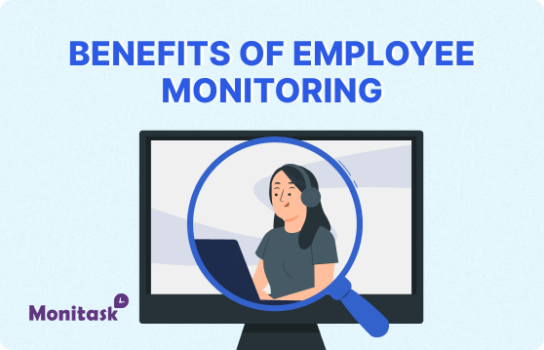What Is the Employee Experience Index?
The Employee Experience Index (EXI) is a comprehensive metric used to measure and evaluate the overall quality of an employee's interactions and perceptions throughout their journey with an organization. It typically encompasses factors such as workplace satisfaction, engagement, well-being, and productivity. EXI scores help organizations identify areas for improvement in their employee experience strategies.
The concept of employee experience has gained significant traction in recent years, with organizations recognizing its crucial role in attracting, retaining, and engaging top talent. As a result, the Employee Experience Index (EXI) has emerged as a valuable tool for HR professionals and business leaders to quantify and analyze the various touchpoints that shape an employee's journey within a company.
Origins and Development
The Employee Experience Index was initially developed by IBM and Globoforce (now WorkHuman) in 2017. Their research involved surveying more than 23,000 employees across 45 countries and territories, aiming to create a scientifically validated measure of employee experience.
Since its inception, various organizations and consulting firms have adapted and expanded upon the original concept, creating their own versions of the EXI tailored to specific industries or organizational needs. This evolution has led to a diverse range of approaches in measuring and interpreting employee experience.
Key Components of the Employee Experience Index
While the exact components may vary depending on the specific index used, most Employee Experience Indices typically include the following core elements:
- Belonging: The sense of being part of a team and feeling valued within the organization
- Purpose: Alignment between an employee's work and the company's mission
- Achievement: The ability to meet goals and receive recognition for accomplishments
- Happiness: Overall job satisfaction and positive emotions associated with work
- Vigor: Energy levels and enthusiasm for work tasks
These components are often measured through surveys, feedback sessions, and other data collection methods to generate a comprehensive EXI score.
Calculating the Employee Experience Index
The calculation of an EXI score can vary depending on the specific methodology used. However, a common approach involves the following steps:
- Survey Design: Create a questionnaire that addresses the key components of employee experience
- Data Collection: Distribute the survey to employees and gather responses
- Scoring: Assign numerical values to responses (e.g., on a scale of 1-5)
- Weighting: Apply weights to different components based on their perceived importance
- Aggregation: Combine scores across all components to generate an overall EXI score
Here's a simplified example of how an EXI score might be calculated:
| Component | Score (1-5) | Weight | Weighted Score |
| Belonging | 4 | 20% | 0.8 |
| Purpose | 3 | 25% | 0.75 |
| Achievement | 4 | 20% | 0.8 |
| Happiness | 3 | 20% | 0.6 |
| Vigor | 4 | 15% | 0.6 |
| Total EXI Score | 3.55 out of 5 |
This example demonstrates a basic approach to calculating an EXI score. In practice, more sophisticated statistical methods may be employed to ensure accuracy and reliability.
Benefits of Using the Employee Experience Index
Implementing an Employee Experience Index can provide numerous advantages for organizations:
- Holistic Measurement: EXI offers a comprehensive view of employee satisfaction beyond traditional engagement metrics
- Actionable Insights: Identifies specific areas for improvement in the employee experience
- Benchmarking: Allows comparisons across departments, locations, or even industries
- Predictive Capabilities: Can help forecast turnover rates and other key HR metrics
- ROI Justification: Provides data to support investments in employee experience initiatives
According to a 2023 study by Deloitte, organizations with high EXI scores reported 22% higher productivity and 37% lower turnover rates compared to those with low EXI scores.
Challenges and Limitations
While the Employee Experience Index is a valuable tool, it's important to acknowledge its potential limitations:
- Subjectivity: Responses may be influenced by recent events or personal biases
- Cultural Differences: Interpretations of questions may vary across cultures and regions
- Survey Fatigue: Frequent assessments may lead to decreased participation or thoughtful responses
- Overemphasis on Scores: Organizations may focus too much on improving the EXI score rather than addressing underlying issues
- Complexity: Comprehensive EXI assessments can be time-consuming and resource-intensive
Employee Experience Index vs. Other HR Metrics
To better understand the unique value of the EXI, it's helpful to compare it with other common HR metrics:
| Metric | Focus | Advantages | Limitations |
| Employee Experience Index (EXI) | Holistic employee journey | Comprehensive, actionable insights | Complex to implement |
| Employee Net Promoter Score (eNPS) | Likelihood to recommend employer | Simple, easy to implement | Limited depth of insights |
| Employee Satisfaction Index (ESI) | Job satisfaction | Well-established, comparable | May not capture full experience |
| Turnover Rate | Employee retention | Clear, quantifiable metric | Lagging indicator, lacks context |
Implementing an Employee Experience Index
For organizations considering the implementation of an EXI, the following steps can serve as a guide:
- Define Objectives: Clearly outline what you hope to achieve with the EXI
- Choose or Develop a Model: Select an existing EXI framework or create a custom one
- Design the Assessment: Create surveys and data collection methods
- Communicate with Employees: Explain the purpose and importance of the EXI
- Collect and Analyze Data: Gather responses and calculate scores
- Share Results: Transparently communicate findings with employees and stakeholders
- Develop Action Plans: Create strategies to address areas for improvement
- Monitor and Iterate: Continuously track progress and refine the EXI process
Future Trends in Employee Experience Measurement
As the field of employee experience continues to evolve, several trends are shaping the future of EXI:
- AI and Machine Learning: Advanced algorithms will enable more accurate predictions and personalized insights
- Real-time Feedback: Continuous monitoring tools will provide up-to-the-minute EXI data
- Integration with Other Systems: EXI will be increasingly linked with performance management and HRIS platforms
- Focus on Well-being: Mental health and work-life balance will play a larger role in EXI calculations
- Customization: More organizations will develop industry-specific or culturally-tailored EXI models
A 2024 report by Gartner predicts that by 2026, 60% of large enterprises will use AI-powered employee experience platforms to analyze and optimize their EXI scores.
Conclusion
The Employee Experience Index has emerged as a powerful tool for organizations seeking to understand and improve the holistic journey of their workforce. By providing a comprehensive measure of employee satisfaction, engagement, and well-being, the EXI enables HR professionals and business leaders to make data-driven decisions that enhance the overall employee experience.
As the workplace continues to evolve, particularly in light of remote and hybrid work models, the importance of accurately measuring and optimizing the employee experience will only grow. Organizations that effectively leverage the insights provided by their EXI are likely to see improved retention rates, higher productivity, and a more engaged workforce.
While implementing an EXI can be complex and resource-intensive, the potential benefits in terms of employee satisfaction, productivity, and organizational success make it a worthwhile investment for many companies. As with any metric, it's crucial to view the EXI as one part of a broader strategy for creating a positive and supportive work environment.
By staying attuned to emerging trends and continuously refining their approach to measuring employee experience, organizations can position themselves as employers of choice in an increasingly competitive talent landscape.


